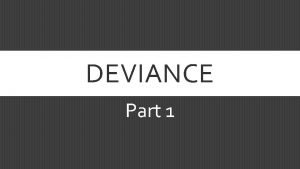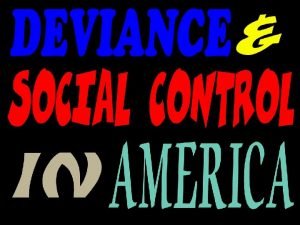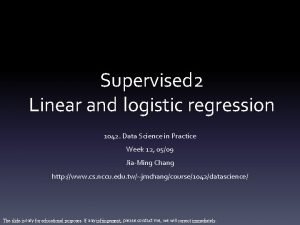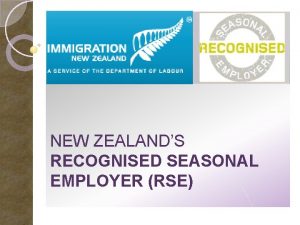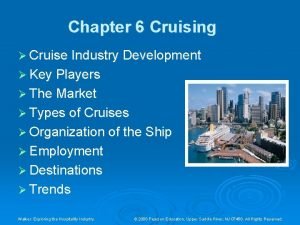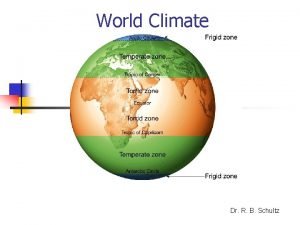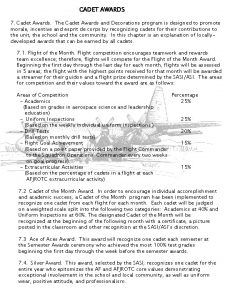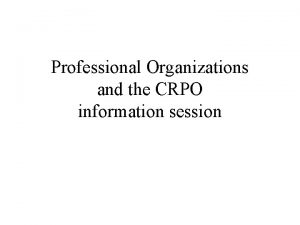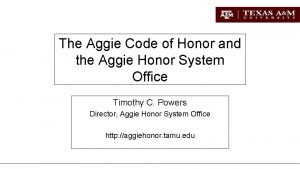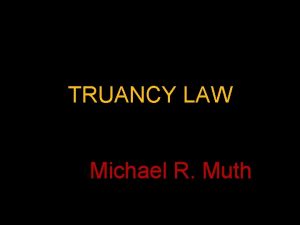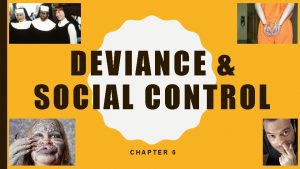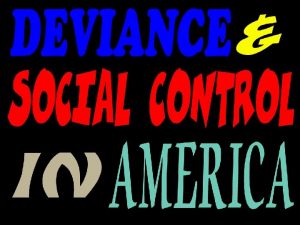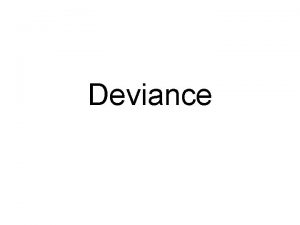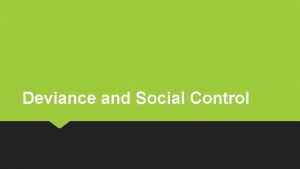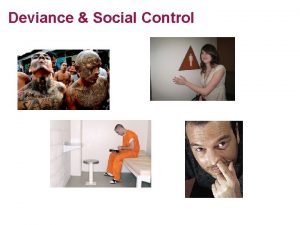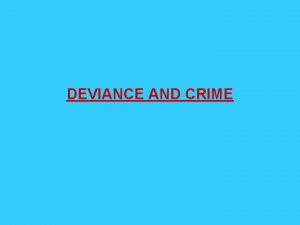What is deviance Deviance is the recognized violation










- Slides: 10

What is deviance? • Deviance is the recognized violation of cultural norms • Social norms guide virtually all human activities, so the concept of deviance is quite broad • One category of deviance is crime, the violation of a society’s formally enacted criminal law

Deviance draws negative sanctions • “Deviance constitutes departures from norms that draw social disapproval such that the variations elicit, or are likely to elicit if detected, negative sanctions” (Clinard & Meier, 2008) • concept incorporates both social disapproval of actions and social reactions to the disapproved actions

The Social Foundations of Deviance • Deviance varies according to cultural norms • People become deviant as others define them that way • Both norms and the way people define rule breaking involve social power

Deviance is a contested concept • a contradiction: no consensus reliably identifies behavior, people, or conditions that are deviant – yet most people claim they know deviance when they see it (Clinard & Meier, 2008), e. g. , • opinions vary on when drinking becomes “problem” drinking • many dispute the harm of crimes such as prostitution & use of marijuana or cocaine (Meier & Geis, 2006) • only in 1973 did the American Psychological Association declassify homosexuality as a mental disorder, removing it from the DSM (Diagnostic & Statistical Manual of Mental Disorders)

What is “normal”? • norms are expectations of conduct in particular situations • standards of appropriate behavior for actors with a given identity • notion of expectations (or standards) highlights regularities of behavior based on habit or custom • norms regulate human social relations and behavior • norms are social properties, shared group evaluations or guidelines

Norms are socially constructed • Norms do not simply operate in society • Norms are created are enforced • norms are promoted, sometimes in competition with one another • Society creates norms in much the same sense that the idea of deviance itself results from social construction social interaction

Norms vs Rules • norms are not necessarily clear-cut rules • rules come from some authority, which formulates them individually and imposes them on others • norms may be formal or informal • norms are formalized as rules or laws • law may be criminal or civil • deviance is the violation of formal or informal norms • crime is an important subset of deviance that takes the form of violations of criminal law

Deviance & Society Deviance is shaped by society Deviance: • • • refers to something different from something else • people “not like us, ” who “act different” - or so we believe • it depends on some audience’s definition of something as deviant implies something evaluated negatively or disvalued is relative Each of 3 ideas - differentness, judgment, and relative standards - has important implications for a sociological understanding of deviance • • helps make sense of individual deviant conduct – and its connection to the larger social community (Clinard & Meier, 2008)

Deviance & the deviant emerge out of a continuous process of interaction • For deviance to become a public fact, the following conditions must be met: • Some deviant category must exist (inscribed in tradition or law, for example) • A person must be viewed as violating the category • Someone must attempt to enforce this violation of the category (Clarke, 2008)

Clarke, 2008 Key question: How (and why) do behaviors or conditions become defined as deviant? • Requires historical analysis of legislative & political processes that affect the evolution, modification, and enforcement of deviant categories • Focus on those who possess the power & resources not only to define deviance but also to apply a label of deviance and to make the label stick (Clarke, 2008)
 It is defined as the recognized violation of cultural norms
It is defined as the recognized violation of cultural norms Is the recognized violation of cultural norms.
Is the recognized violation of cultural norms. Null deviance vs residual deviance
Null deviance vs residual deviance Recognized seasonal employer visa
Recognized seasonal employer visa Which company is recognized as the inventor of cruising
Which company is recognized as the inventor of cruising Which two types of polar climate are recognized?
Which two types of polar climate are recognized? To be recognized as an “ace of aces” a cadet must
To be recognized as an “ace of aces” a cadet must Optimize_for_sequential_key is not recognized
Optimize_for_sequential_key is not recognized Crpo standards of practice
Crpo standards of practice Honor violation probation tamu
Honor violation probation tamu Judge muth east stroudsburg pa
Judge muth east stroudsburg pa
